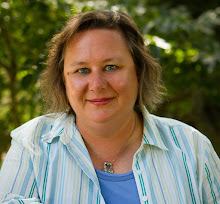Although Independence Day has passed, I still have fireworks in the garden. July is peak season for a number of perennials like monarda, hollyhocks, and daylilies, but one also one of my favorite shrubs. Bottlebrush buckeye (
Aesculus parviflora) is a large shrub for part to full shade. It is doing quite well under the spruces, which means it can handle the Evil Dry Shade of Doom despite Dirr and others saying otherwise. Thank God, something is happy there. It's a continual test labratory for pushing the tolerances of plants. I planted
Carex pennsylvanica this year. We'll see how it does, as it is one of our native sedges that supposedly can handle drier soils.
One big one and one small one
Bottlebrush buckeye is not for the small garden, really. It wants to be at least ten feet high and it will form large suckering colonies. Introduced in 1785, it is native to South Carolina, Georgia, etc., although grows very happily in my zone 5 garden. William Bartram first noted the plant and it is still in his Philadelphia garden as of 1930. I can't remember if I saw it there when we visited a few years ago. John Fraser, though, was the first to introduce it to the British horticulturists and gardeners. I put it in the shrub border I'm building between us and the neighbors. In winter, it's leggy habit is very see-through, but in full leaf, it is an impeneterable barrier. Then it blooms. The soft white flower spikes on these beauties can be nearly 18 inches tall. The flowers can last a very long time, and I tend to leave them up. Occasionally, you'll get a fruit.
Aren't those flowers spectacular?
Purchasing this plant in a garden center can be an expensive endeavor. Bottlebrush buckeye is notorious for being difficult to propagate on a commercial basis. Why? It is tricky to cultivate from seed and cuttings. My little one is from a friend and the larger one was purchased at the Morton Arboretum's annual plant sale. Both of them are suckers from larger plants and the first year I did water the hell out of them. Now they are cheerfully sending up their own suckers and filling the area slowly. Hooray! I'm looking forward to having many more years of dazzling blooms.



